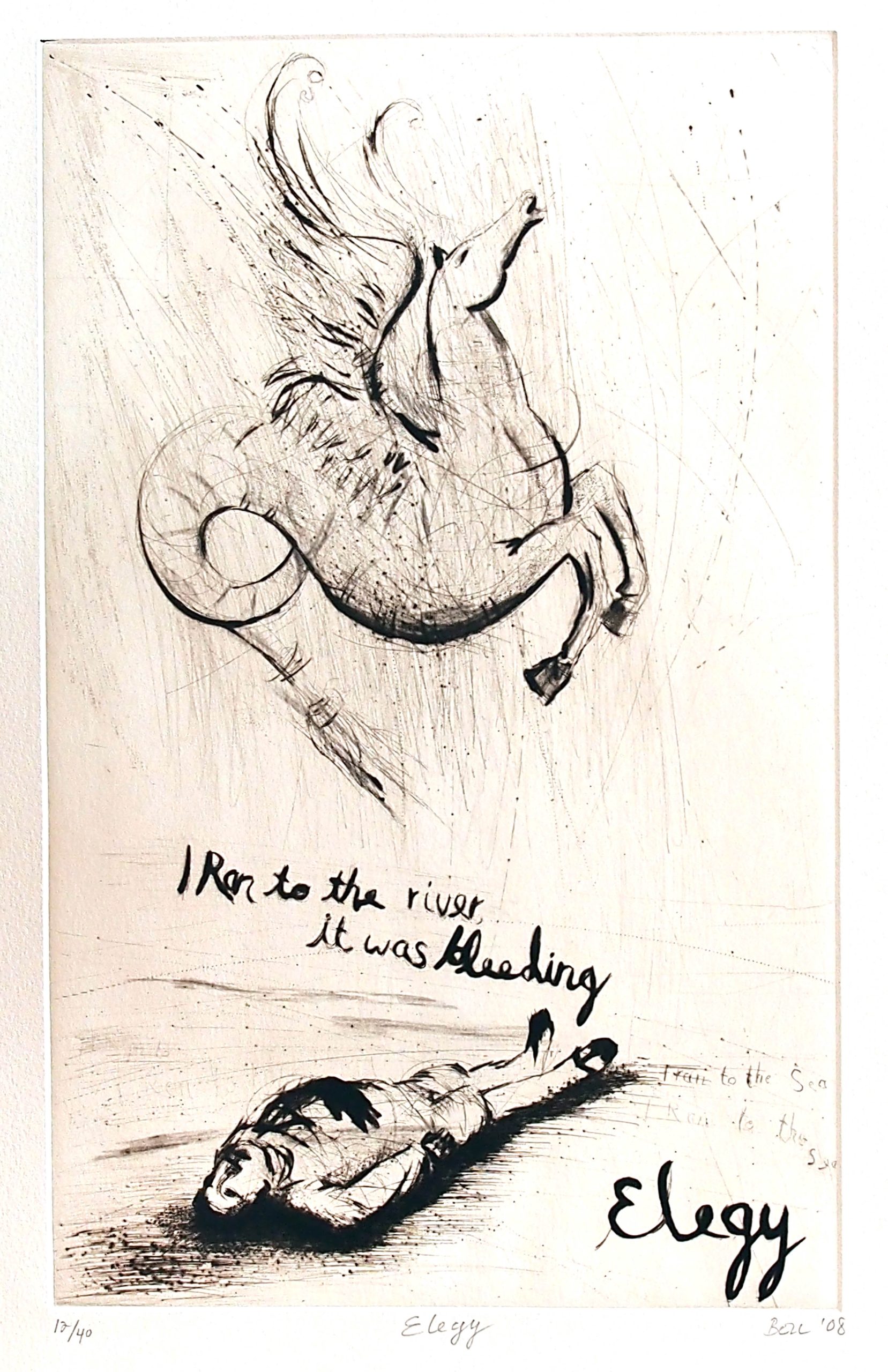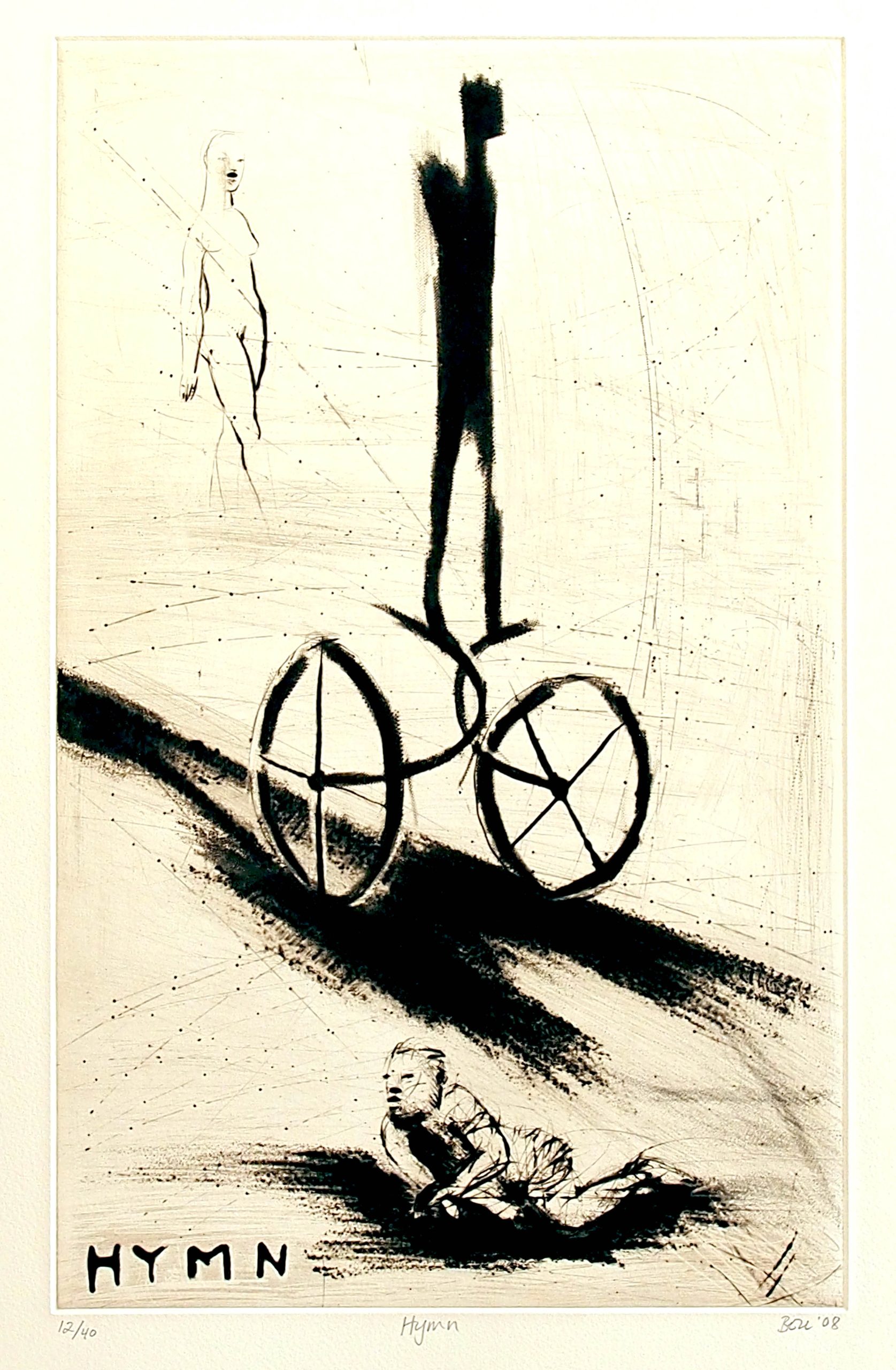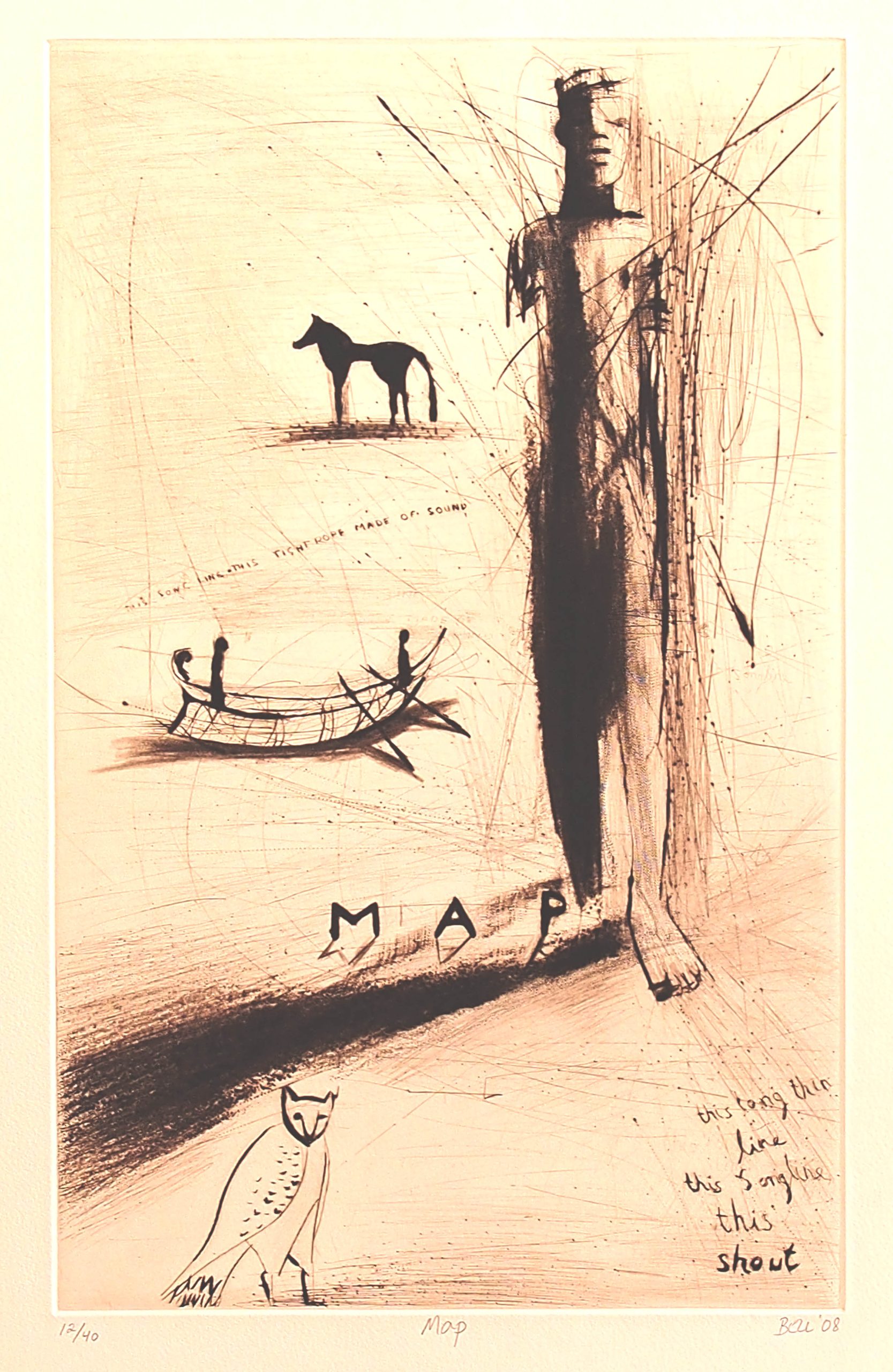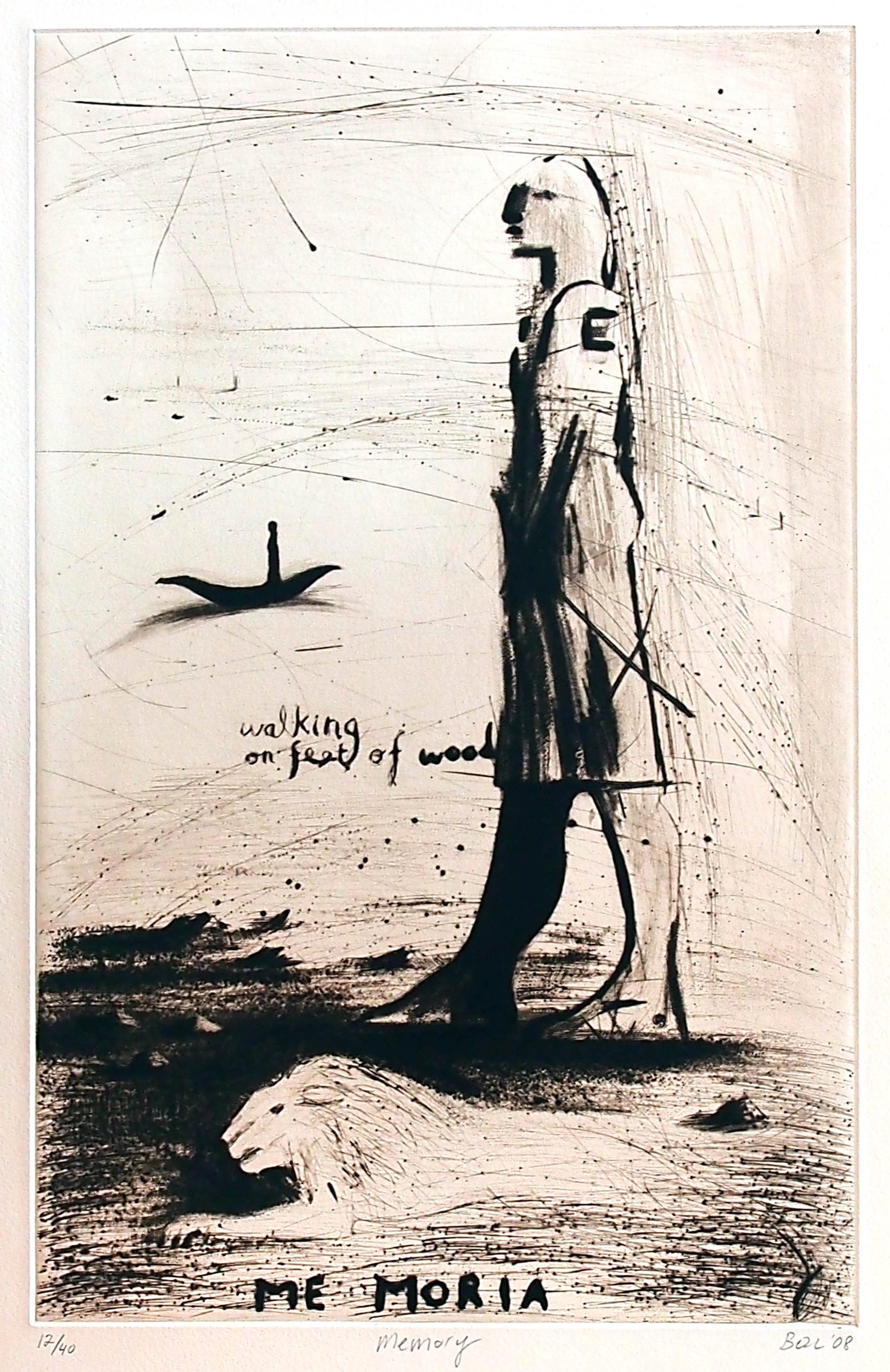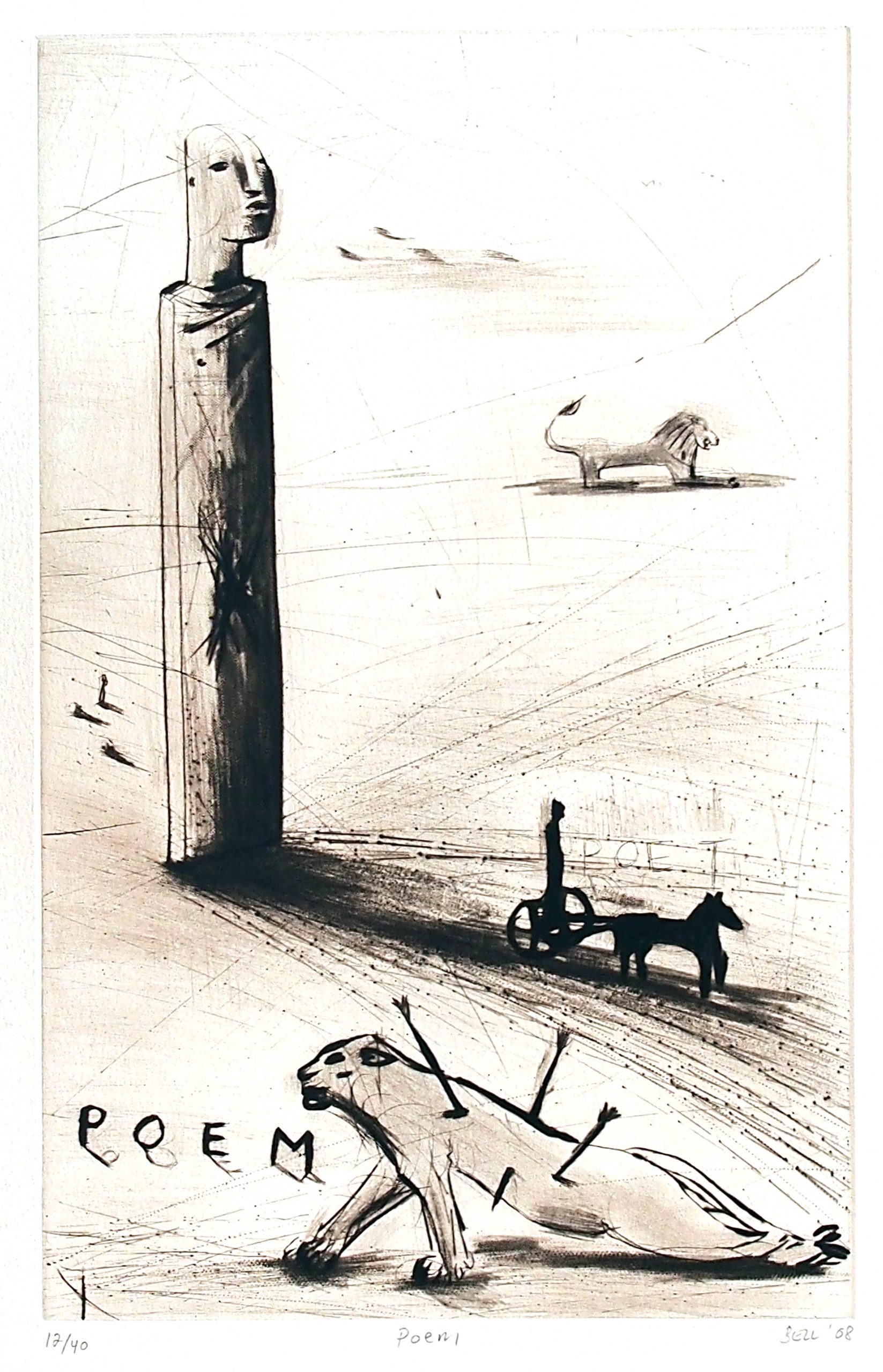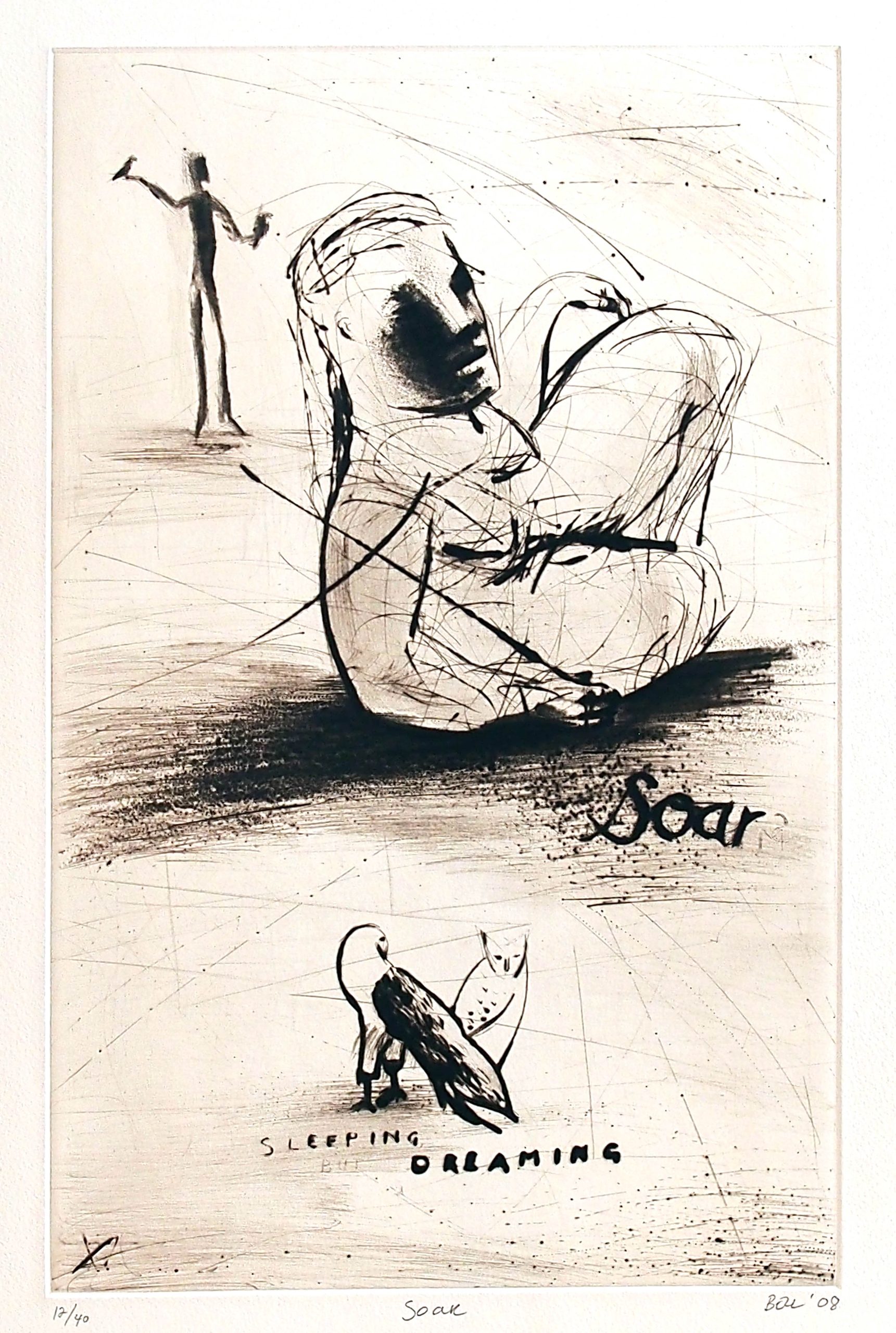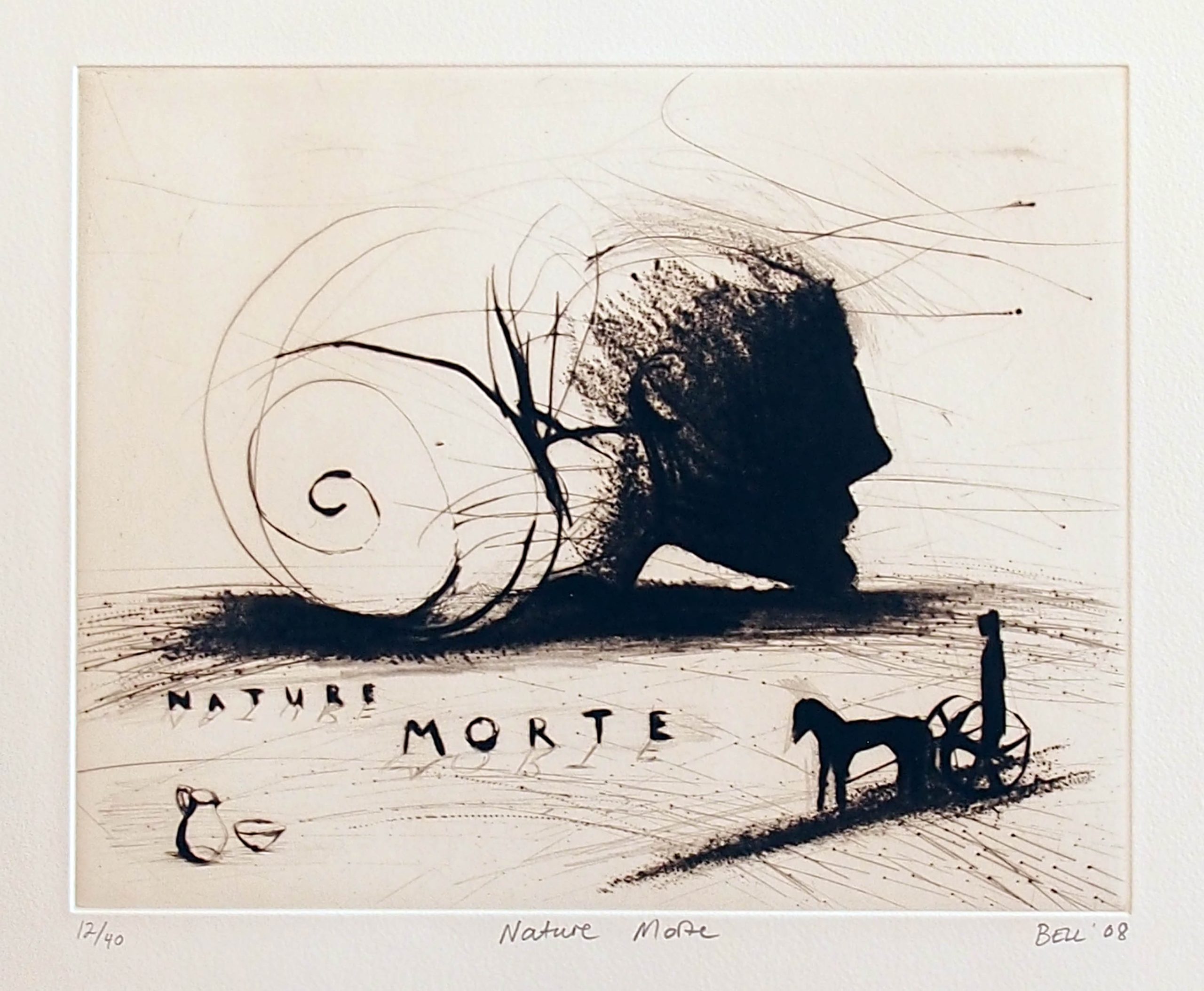
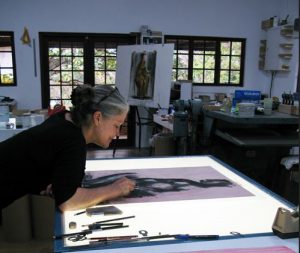 Deborah Bell is one of South Africa’s most celebrated contemporary artists. She works in a range of media on canvas and paper, produces dry point etchings and large-scale bronzes. Her earlier more political work has given way to a broader, deeper investigation into the border been mortality and immortality, matter and spirit, presence and absence, the quotidian and the mythic, the grounded and transcendent. In recent years she has developed an immediately recognisable visual language, her images simple, stark, symbolic – grounded, silent, still, poised. As Ricky Burnett has stated: at the very edge of time.
Deborah Bell is one of South Africa’s most celebrated contemporary artists. She works in a range of media on canvas and paper, produces dry point etchings and large-scale bronzes. Her earlier more political work has given way to a broader, deeper investigation into the border been mortality and immortality, matter and spirit, presence and absence, the quotidian and the mythic, the grounded and transcendent. In recent years she has developed an immediately recognisable visual language, her images simple, stark, symbolic – grounded, silent, still, poised. As Ricky Burnett has stated: at the very edge of time.
In her iconography she draws from a range of cultures (including African, Chinese, Egyptian, Greek, early Christian and European) and a range of philosophies (especially the Buddhist preoccupation with stillness and the shedding of attachment and the ego) and psychologies (more Jung than Freud) – but her work digs deeper, arriving finally out of an internal and personal place that Bell occupies in the world as an artist, a woman and an explorer. A central task is to make the unknown present – apprehended in a series of powerful images that are both of her and beyond her. Her earlier figures, characterised by entrapment (in the country, in the body), have given away to figures embodying the seeker – often accompanied by boats, horses, chariots. Images of lions, dogs, horses and angels recur. These are often intermediary figures between the physical world and a higher more spiritual realm. They are also aspects of herself – the powerful daemons that reside in all of us, which are often accompanied by solitary female figures, some full of assertive confidence, others more vulnerable and less sure of their agency. Bell is interested in the half-formed image – the unwritten, as yet unformed spaces we move towards in our quest for self-knowledge. More recent work has also become more concerned with surrender – to the higher self, the mystery of the universe, the simplicity of the present. All her art, she has stated, works towards the Zen mark: the single gesture of absolute presence. Her quest is ongoing – and has left in its wake a series of hugely powerful, totemic images from what Yeats called Spiritus Mundi.
Deborah Bell has worked with a great variety of media during her career and has collaborated on various historically important projects with contemporaries such as William Kentridge and Robert Hodgins. Bell received her BAFA (Hons) and MFA degrees at the University of Witwatersrand, and has been an artist working abroad and a lecturer at various South African tertiary institutions, including the University of the Witwatersrand. Bell lives and works from her studio in Magaliesburg, as well as being a collaborator at the David Krut studios on several projects.

